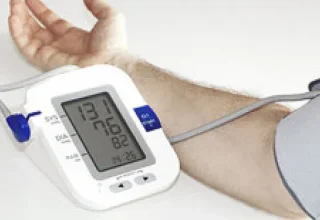
As most people are advised to stay home these days, it is primarily resulting in a delay in their periodic health check-ups. Even routine procedures like checking blood pressure have become difficult for those who want to avoid crowded places and hospitals and clinics. Blood pressure is one of the four vital signs that show how the body and its organs are performing. A fluctuation in any of these vital signs may indicate an underlying health problem. But how do you monitor your blood pressure at home?
A blood pressure reading indicates the amount of force blood puts on the vessels. High blood pressure, or hypertension, can happen because of several reasons, including stress, fear, high cholesterol, poor diet, sedentary lifestyle and plaque buildup in the arteries. Controlling high blood pressure require lifestyle changes. According to WHO, about 1.3 billion people worldwide have hypertension.
So, it is important to measure blood pressure accurately as it usually does not show any symptoms until it is dangerously high. Early detection helps control the condition on time.
- Use equipment.
Doctors and other medical professionals use automated electronic or mechanical devices for a quick and accurate reading of blood pressure. You can buy one to regularly monitor your blood pressure at home and seek advice from your personal doctor to manage it.
- Check manually
This method would require a stethoscope, a blood pressure cuff with a squeezable balloon, and an aneroid monitor, which has a numbered dial to read measurements. Sit in a relaxed position and rest your arm on a table. Set the cuff on the bicep and place the stethoscope just inside the elbow crease under the cuff. Start squeezing the balloon to increase pressure to about 180 mm Hg. Slowly deflate the balloon, listen through the stethoscope and watch the aneroid monitor.
The first beats notify the systolic pressure. When they hit, note down the number on the aneroid monitor. Continue listening until the steady heartbeat sound stops. Note down the number on the monitor again. This is the diastolic pressure.
If you experience abnormal blood pressure, it is crucial to inform your doctor immediately.




































